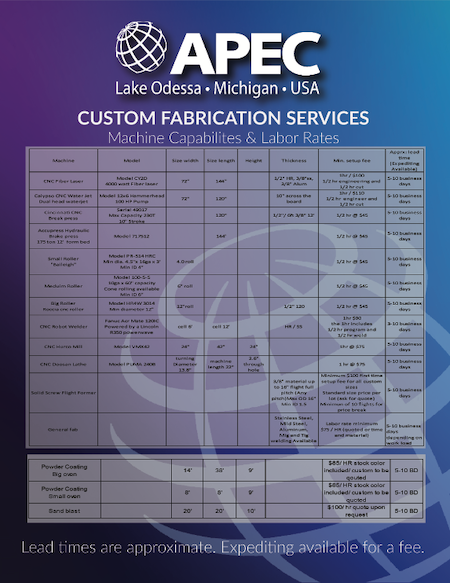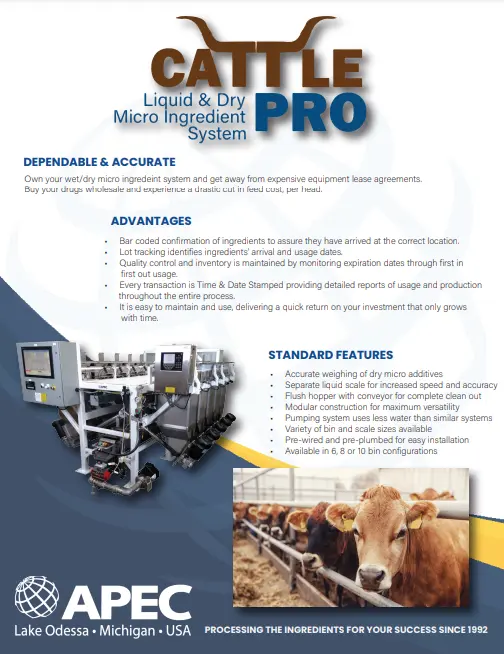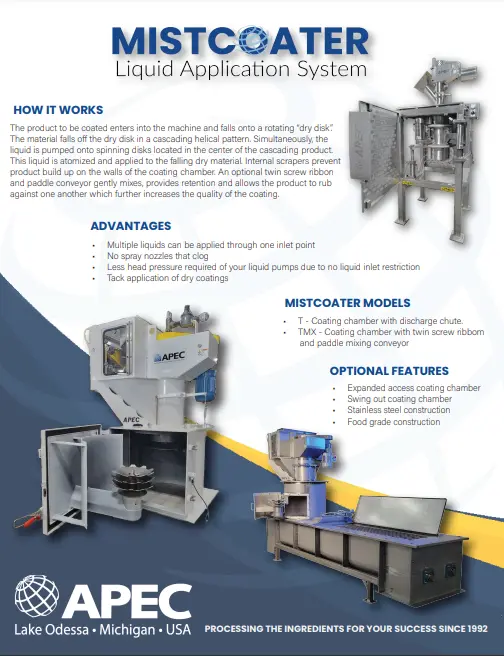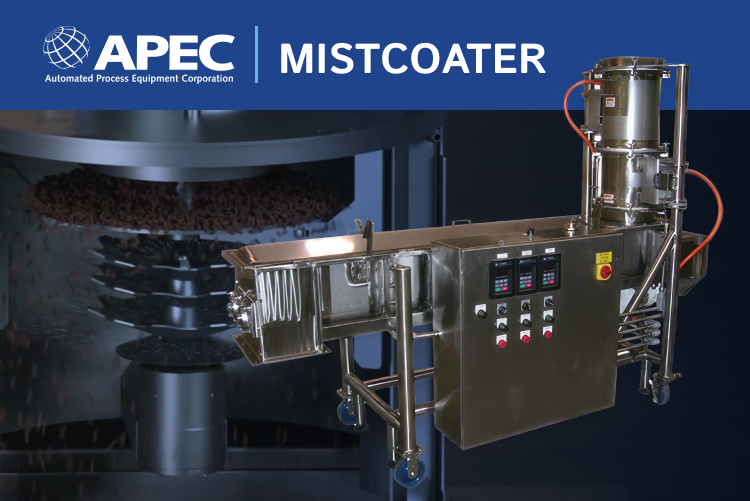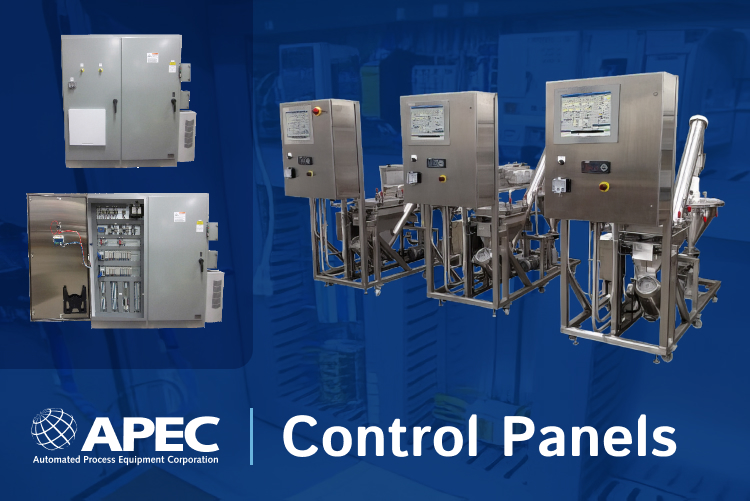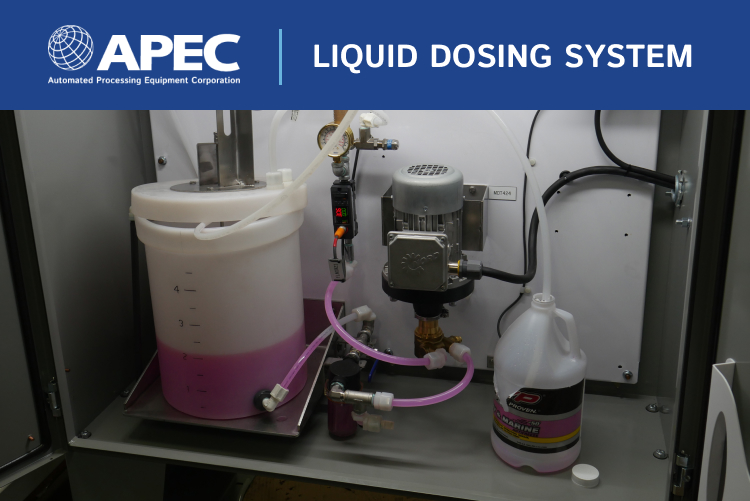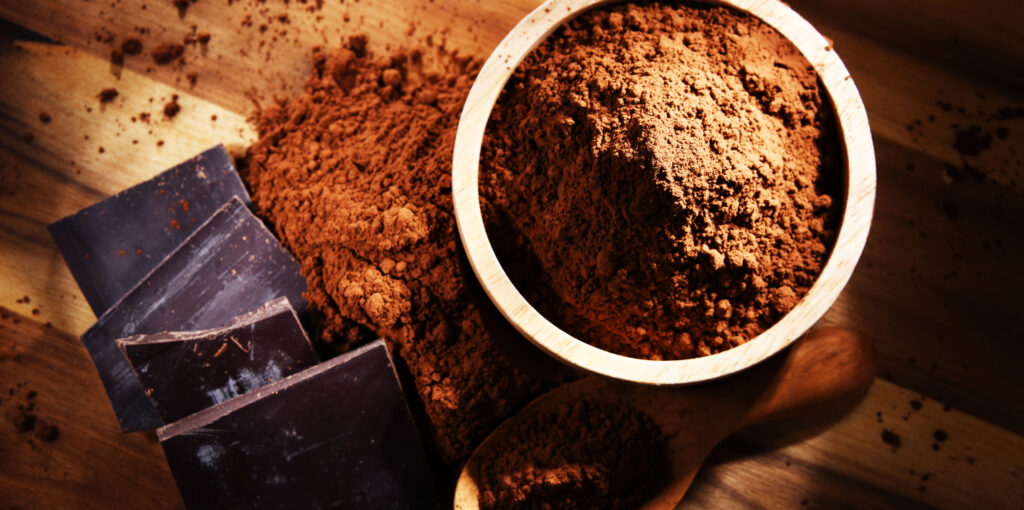
Dry mix processing covers a wide array of ingredients and types of mixes. This might include everything from the dry mix that most animal feed and pet food is made of, to the dry mixes for cake mix or pancake mix, to spice mixes, and much more. However, many of these mixes suffer from the same common dry mix processing problems. Many of these problems also have some relatively easy solutions. Let’s take a look.
4 Fast Hacks to Solve Common Dry Mix Processing Problems
First, Assess Materials
Being aware of your ingredients’ properties is the first step to anticipating—and solving—dry mix processing problems. We’ve covered this in previous blog posts, but it’s an important step that should not be overlooked. Knowing these properties about each ingredient will help you predict how the ingredients will behave, and help you predict problems you might encounter.
- Density
- Viscosity
- Angle of repose
- Fat content
- Moisture content
- Particle variability
- Corrosive or abrasive properties
- Food grade or pharmaceutical grade
Optimize your dry mix processing
Free download: 8 Key Equipment Decisions to Perfect Your Dry Mix
Sticking: Fats, Oils, Butter
Sticking and clumping is a major challenge for many dry mixes. This is particularly problematic for mixes with high adhesive qualities, like those that contain fats, oil, butter, or oil. Though this may still be a dry mix, even a small addition of these adhesive ingredients can create clumping problems.
1. Solution: Agitation
For mixes that contain fats, oils, and butter, the design of the mixer and the feeder are particularly important. These are two areas where clumping can seriously affect the product quality. If the feeder becomes clogged, a worker may simply hit the feeder to break up the materials, but this is far from an ideal solution. If a no-flow condition occurs, especially if it occurs regularly, this can eat into valuable production time. Using a feeder with agitation built-in, such as a TSS feeder, can provide a long-term solution.
When working with a mix with shortening or butter, adding choppers to the mixer will break up clumps that could form during the mixing process. If the butter is in a liquid form, then it may be necessary to heat the mixer to keep it from solidifying too quickly. Adding the liquid butter at a slower rate can also help to prevent clumps from forming.
Flushing: Flour, Powdered Sugar
Flushing is another common issue affecting dry mix processing and dry mix processing equipment. Ingredients with a shallow angle of repose are usually more prone to flushing. These materials might be light or heavy, but they generally have uniform and symmetrical particles that don’t interlock. This makes them easily aerated and they will flow very quickly, almost like a liquid. These materials can quickly become unmanageable and flood containers, disrupt weighing devices, spill over the floor, and create dust clouds. Ingredients like flour, rice flour, and powdered sugar are a few of the commonly used ingredients in dry mixes that can be susceptible to flushing.
2. Solution: Fast Gate, Deaerate
A knife gate or a butterfly gate can help to prevent flushing at the feeder or mixer. These types of gates open and close quickly. This will stop the flow of materials quickly as well. When working with flushing materials, a high-quality dust collection system is also critical for maintaining a healthy, clean, and safe workplace. Finally, flushing due to aeration can be alleviated by giving the product time to settle and deaerate before discharging the mixer.
Fragile Materials: Peppercorns, Sea Salt
Some materials are supposed to remain whole, but are susceptible to breakage, like peppercorns and coarse sea salt. If these materials are broken up too finely, they can lose important textural elements that make them appealing. This can be a challenge; how can we properly mix these materials without affecting their texture?
3. Solution: Gentle Mixer
A gentle mixing action is important for these types of materials. A paddle mixer will create a homogeneous mixture without breaking apart the materials. A regular screw mixer might also work, but simply working at a slower speed.
High Particle Variation: Spice Mixes
When working with these materials, it’s also important to consider material segregation. Spice mixes and similar dry mixes often contain ingredients with varying particle sizes. For example, in a spice mix where light flakes of dried basil mix with finely ground garlic and comparatively large, round peppercorns or bits of sea salt, the risks of material segregation are very high. If these ingredients separate at the wrong time, it can seriously affect product quality.
4. Solution: Reduce Movement
Movement speeds up material segregation. This might include vibration, free flow, or free fall. Differences in densities and flow rate cause the materials to separate on a vibrating conveyor belt, upon free-fall into a bin, or when flowing horizontally into a container. Simply looking for these instances after the mixing process and reducing movement as much as possible can help to reduce particle separation.
In some cases, simple solutions can solve big problems. In other cases, these solutions require a bit more expertise. If you’ve encountered a dry mix processing problem that’s affecting your production time or product quality, contact us. Our engineers are problem-solvers, and we can help you optimize your process. Get in touch with us today to get started.


